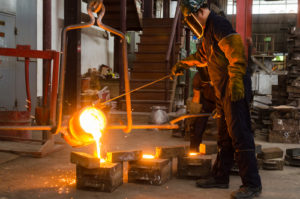
Centrifugal Casting Benefits
Die casters use centrifugal casting technique in order to cast components with intricate geometry. The notion behind centrifugal casting in a general sense is pouring molten metal into a rotating mold’s center portion that is thrown outward due to centrifugal force. The machines used in centrifugal casting in order to spin the mold come with either a vertical or horizontal rotation axis. The benefit of this metal casting technique is that impurities of bare metal accumulate right in the center of the casting.
Centrifugal casting produce components of quality surface finish primarily aside other key features. The unique benefit of this technique is that it does not necessitate usage of cores, runners, parting lines, or gating systems, which are commonly used in standard die casting processes. Centrifugal casting can possibly produce hollow objects that are cylindrical in shape without having to use cores. However, it will prevent shrinkage porosity of the material since casting layers forces its way into another layer at the wall of the mould filling in small cavities only if they happen by centrifugal force.
A plethora of objects having variable diameter and thickness can be cast with centrifugal casting method, be it extremely large in terms of length or short and cylindrical die cast parts. When it comes to getting dimensional accuracy on the component, foundries often rely on this particular metal casting technique.
Centrifugal casting can be of three types, namely centrifugal, true centrifugal, and semi centrifugal casting. Semi centrifugal casting is used to manufacture only the objects that are symmetrically shaped, and the mold’s rotation axis stays in a vertical position for that. Components such as wheels, sheaves, pulleys, and gear blanks are generally manufactured using semi centrifugal casting. The spinning wheels rotate vertically in low speeds that are generally 180 RPM to 200 RPM as recommended by foundries. Gating systems will be used inside the casting to yield a casting with directional solidification, which is an important design principle of metal casting.
Benefits of Semi Centrifugal Casting
- It will produce multiple castings in one sequence. For that, molds can be stacked over one another and molten metal be fed using a spruce placed in the center.
- Just like true centrifugal process, this method also makes sure the component is pure and has right densities required by the clients.
